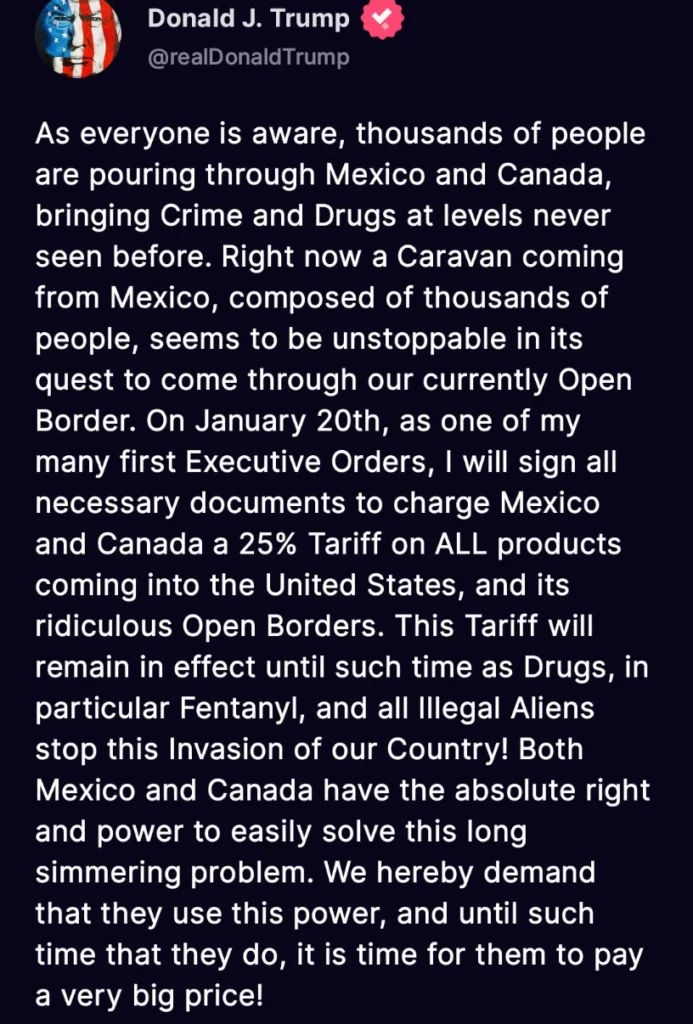US President-elect Donald Trump has announced plans to impose new tariffs on China, Mexico, and Canada on his first day in office. This move aims to pressure these countries to address illegal immigration and drug smuggling into the United States.
Tariff Details
Trump stated that he would sign an executive order imposing a 25% tariff on all goods coming from Mexico and Canada. Additionally, a 10% tariff will be levied on Chinese goods until the Chinese government takes stronger action against fentanyl smuggling into the US.
Trump’s Justification
In a post on his Truth Social platform, Trump wrote, “Both Mexico and Canada have the absolute right and power to easily solve this long simmering problem. It is time for them to pay a very big price!”
He also criticized China, saying, “Until such time as they stop, we will be charging China an additional 10% Tariff, above any additional Tariffs, on all of their many products coming into the United States of America.”
Economic Impact
The proposed tariffs could significantly impact the global supply chain and raise prices for American consumers. The US is the world’s largest importer, with China, Mexico, and Canada accounting for about 40% of its imports, reported The BBC.
Economists warn that these tariffs could lead to higher prices for goods such as gas, automobiles, and agricultural products.
Reactions
China has defended its efforts to stop the flow of illegal drugs, with a spokesperson stating, “The idea of China knowingly allowing fentanyl precursors to flow into the United States runs completely counter to facts and reality.”
Mexico’s finance ministry emphasized the importance of the US-Mexico-Canada Agreement (USMCA) in providing a framework of certainty for investors.
What is a Tariff?
A tariff is a domestic tax levied on goods as they enter the country. The tax is proportional to the value of the import. For example, if a car imported to the US has a value of $50,000 and is subject to a 25% tariff, it would face a $12,500 charge.

